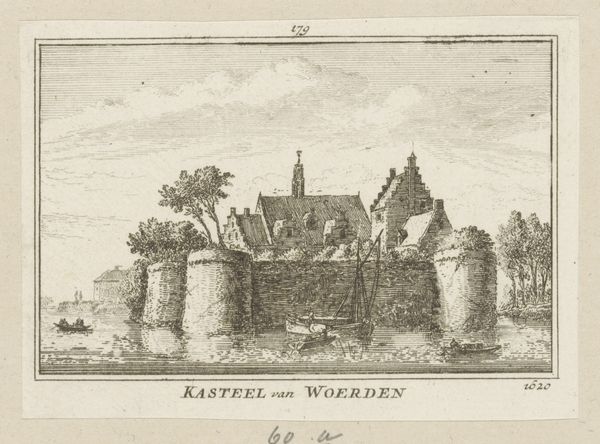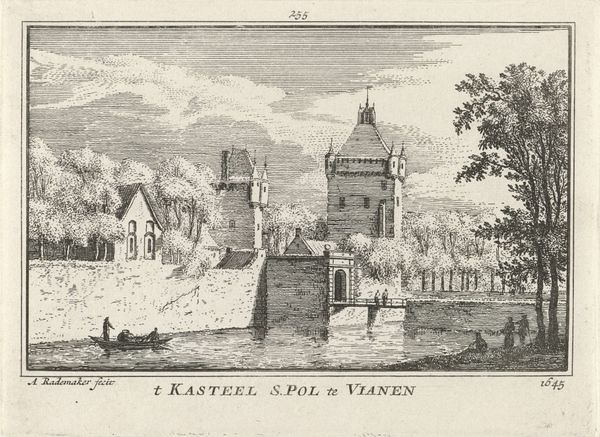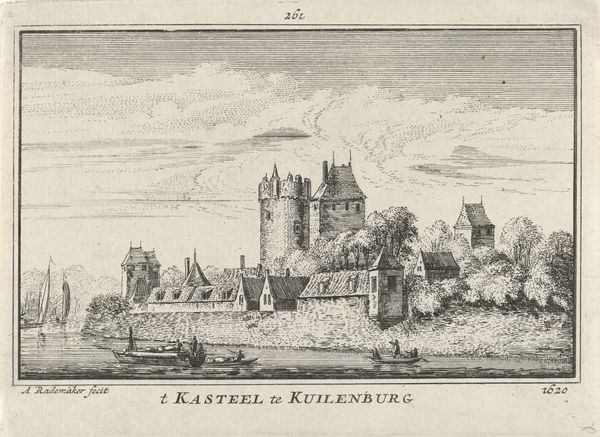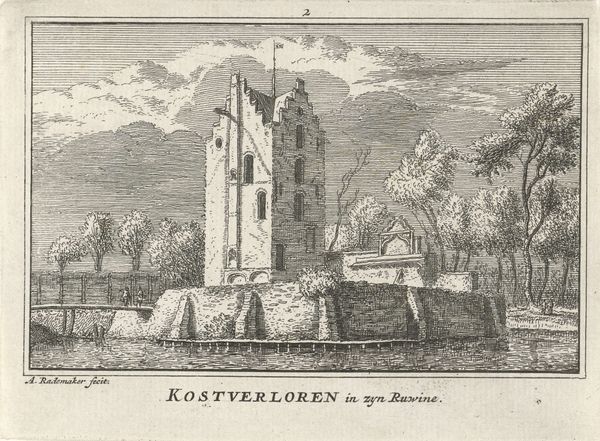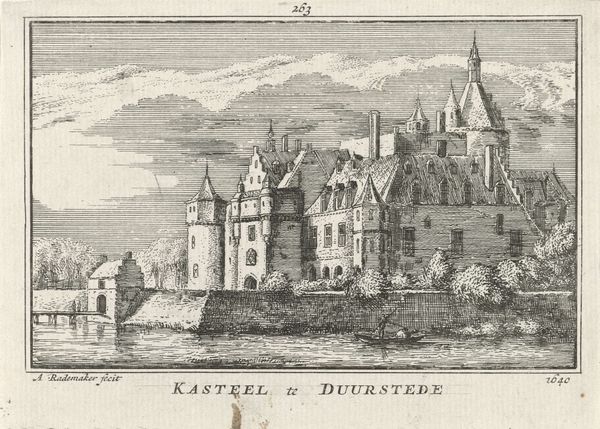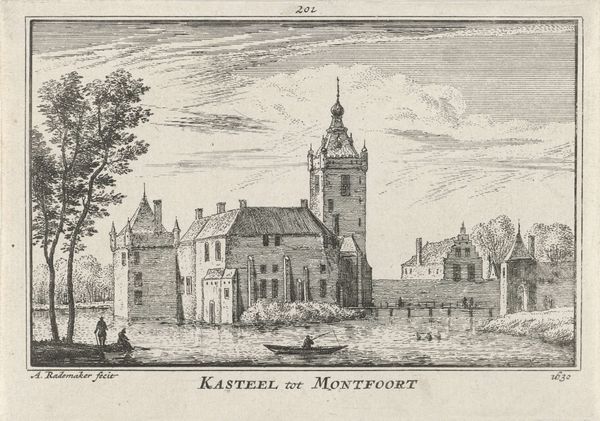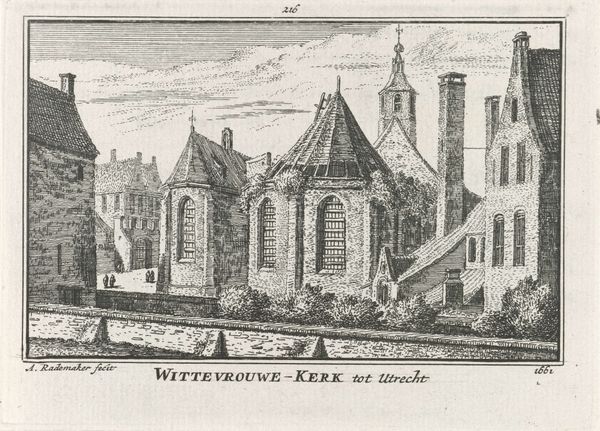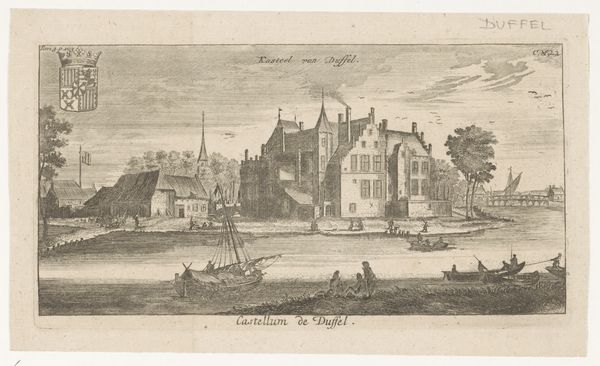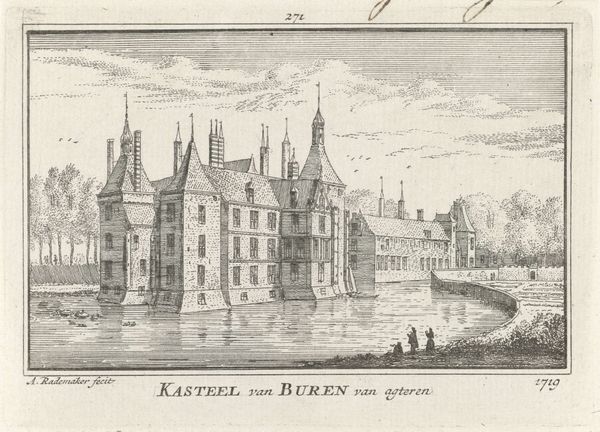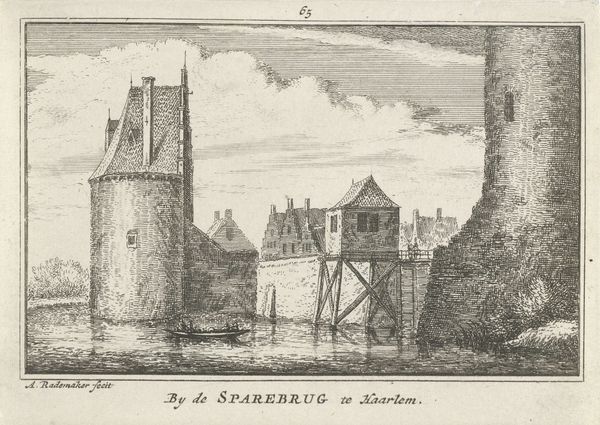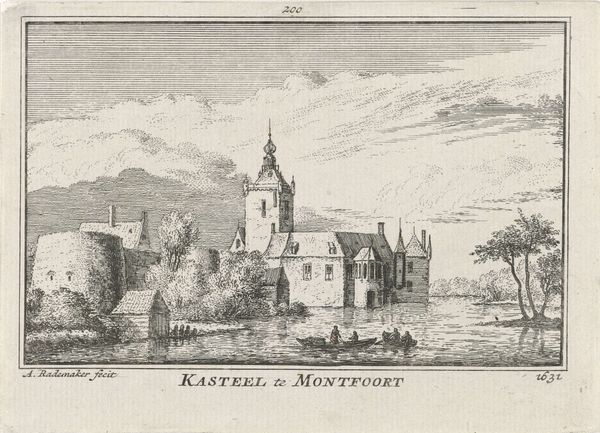
print, etching, engraving
#
baroque
#
dutch-golden-age
# print
#
etching
#
landscape
#
cityscape
#
engraving
Dimensions: height 80 mm, width 115 mm
Copyright: Rijks Museum: Open Domain
Editor: This is "Gezicht op Slot Woerden, 1600," or "View of Woerden Castle, 1600," an etching by Abraham Rademaker made sometime between 1727 and 1733. It's got such a balanced composition, a sense of solidity, but almost… dreamlike with the light etching lines. What do you see in this piece that stands out from a formalist perspective? Curator: Note the calculated division of space. The strong horizontal line of the water bisects the composition, creating a stable foundation for the castle above. Consider the use of line – its meticulous application creates subtle gradations of light and shadow, animating the architectural forms. Editor: It’s like he’s built it out of tiny lines. I hadn’t really focused on that before. Curator: Exactly. And what is the effect of that repeated pattern, the consistent application? This uniform distribution gives the artwork a textural richness but does not disrupt its spatial organization. Do you observe how Rademaker employs diagonal lines in the rooftops and the clouds to introduce a sense of dynamism, contrasting with the static horizontality? Editor: I do. And that contrast really heightens the solidity of the castle itself, right? Grounding it, almost? Curator: Precisely. That calculated balance is fundamental to understanding the work. Every element works in service to this overarching structure, each component is positioned purposefully. How might that calculated contrast underscore the inherent themes within the print? Editor: So it’s not just a nice picture of a castle, it’s deliberately using form to make an argument about stability and…permanence, perhaps? I will consider that next time. Curator: Precisely. By dissecting the elements, you discern meaning in form and composition.
Comments
No comments
Be the first to comment and join the conversation on the ultimate creative platform.
